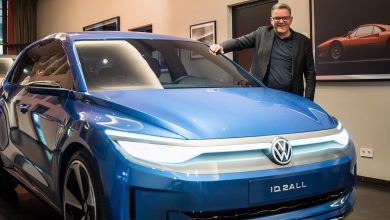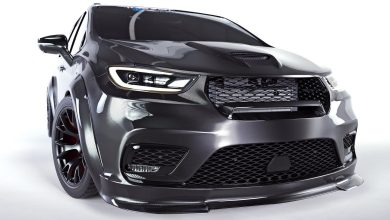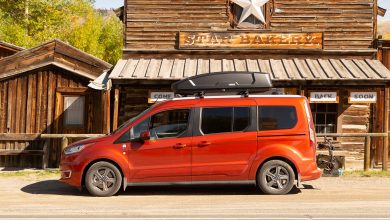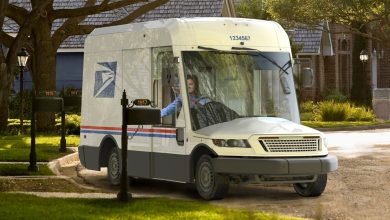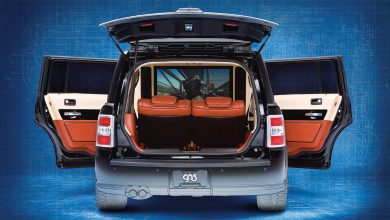Volkswagen Should Go Big and Sell Us the Tiny, Revolutionary ID2

Volkswagen’s ID2all concept revealed earlier this year previews what will be one of the most important cars from Wolfsburg in decades. The production version of the ID2, which goes on sale in Europe at the beginning of 2026 and insiders describe as an electric analogue to the sub-Golf-sized Polo, will not only debut a new design direction for Volkswagen, but also a new EV platform that is lighter and more affordable and has been designed to underpin a number of forthcoming compact Volkswagen EVs, including a new electric Golf GTI.
We’ve yet to see the production version yet but based on what we’ve been told by Wolfsburg insiders, the ID2 is set to redefine the core values of the Volkswagen brand for the 21st century in much the same way the original Golf helped the company throw off the shackles of the Beetle almost 50 years ago.
The ID2 will be built on a front-drive electric vehicle architecture called MEB 21 that’s derived from the MEB architecture that underpins the current ID lineup. Two battery packs will be available at launch, 58 kWh and 38 kWh. Given the car’s target weight is between 3300 and 3500 pounds—about 500 pounds less than the lightest MEB car, the single-motor ID3, and about 1200 pounds less than a single-motor ID4—they should deliver a range of about 280 miles and 200 miles, respectively, on the WLTP test cycle. The base e-motor will be a 223 horsepower unit, but the top model—insiders coyly smile if you mention GTI—will have 265 hp.
As with MEB, the MEB 21’s battery pack is under the floor and between the axles. But while single-motor MEB models have a rear-mounted e-motor and are rear-drive, with other powertrain components located under the frunk, in MEB 21 the e-motor, inverter and other powertrain components are all packaged up front under the hood, like the powertrain and transmission in a front-drive internal combustion engine (ICE) vehicle. It sounds somewhat retrograde, perhaps, but it’s the reason MEB 21 promises to be such a game-changer.
Mimicking the packaging location of a front-drive ICE powertrain legitimizes the two- and three-box proportions many consumers find attractive and bucks the trend towards ever larger glass areas seen in many other EVs keeping the interior cooler in hot climates, reducing the demand on the battery from the climate control system.
With no powertrain hardware behind the rear axle, there’s room for a large load space at the rear of the ID2, including a huge underfloor compartment insiders have nicknamed “the cellar.” Having all the powertrain components closely co-located reduces the amount of copper wire needed, helping reduce cost and weight.
Most important, MEB 21 doesn’t require a totally unique production line like the MEB. While Volkswagen has spent billions building bespoke MEB manufacturing facilities, MEB 21 can be built in factories that currently make internal combustion engine Volkswagens based on the highly versatile front-drive, transverse engine MQB architecture—in other words, everything from the Golf GTI hatch and Jetta sedan to the Tiguan and Atlas SUVs—with relatively little extra investment.
MEB 21 is flexible, too. The wheelbase will be increased by 2.4 inches to support a Golf-sized EV currently under development, and a total of 4.8 inches for a compact electric SUV. The track can be increased by 1.2 inches to ensure these cars have the same chunky, broad-shouldered stance as the ID2. MEB 21’s design means increasing the wheelbase to underpin a Golf EV would add just 220 pounds to the overall weight, which is why it won’t necessarily need bigger and heavier battery packs than the ID2 to deliver good range.
MEB 21 will also support pulse-quickening compact performance Volkswagen EVs. In addition to the 265 hp GTI version, an all-wheel drive ID2 GTX is already under development, and the engineering concepts for the Golf-sized car include a GTI with a 320 hp version of the new APP550 e-motor fitted to the ID7 electric sedan, driving the front wheels through an electronically controlled limited slip differential.
The ID2 is an overt acknowledgement that the EV strategy developed by former Volkswagen CEO Herbert Diess has not been a total success. The MEB Volkswagens are big and heavy and too expensive. They are not particularly well packaged, and, with the exception of the ID Buzz, they don’t have the well-tailored exterior design and upscale interior presentation that made Piech-era Volkswagens, from Polo to Phaeton, stand apart from the mainstream crowd.
The MEB 21 architecture won’t replace MEB. Volkswagen has invested far too much in MEB and needs it to underpin EVs larger than a Golf or Tiguan anyway. Instead, MEB’s performance and functionality will continue to be meaningfully improved, as revealed by our drive of the ID7, and the frumpy exteriors and cheap interiors of most current ID models refined and redesigned to reflect the design language of the new ID2.
With a target price of under $26,000, the ID2 is intended to be nothing less than Volkswagen’s halo car in terms of its design, its performance and efficiency, and its value for money. It’s shaping up to be the EV-era Golf, and something I’m sure the price alone would speak to enough Americans to make the argument to sell it stateside given rising average transaction costs of not just EVs, but all vehicles in the country.
Read the full article here


